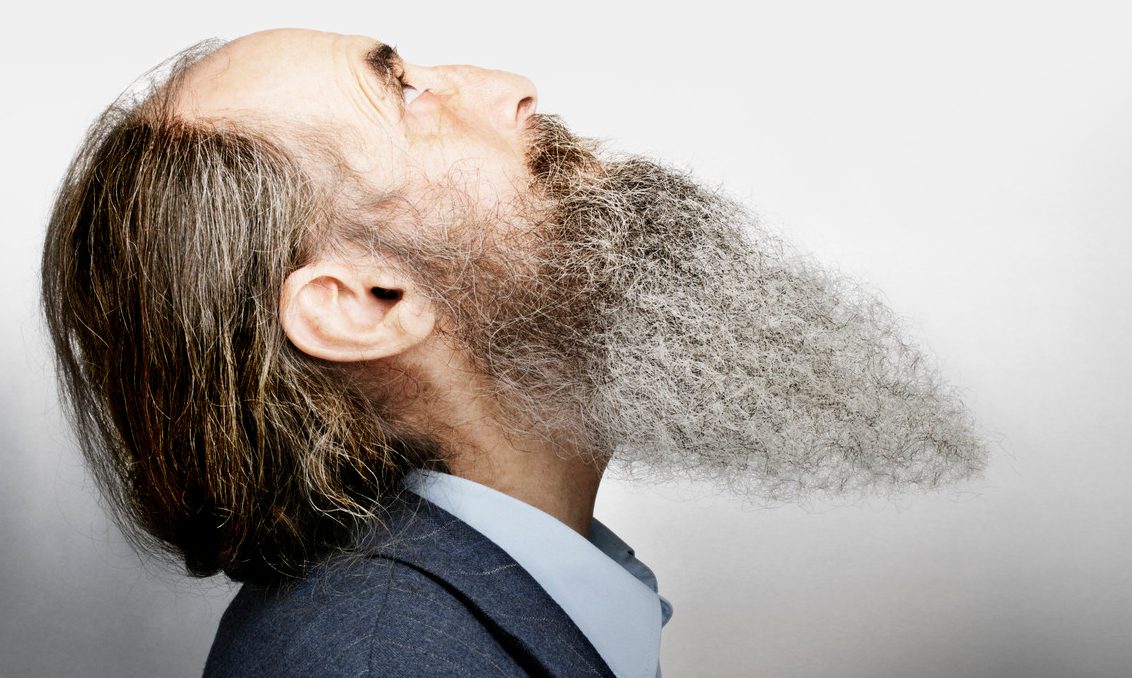What You Need to Know about Hair Loss

Bald is beautiful for some people. But if you want to save your thinning hair, see your doctor because hair loss can be the first sign of a health problem.
If you notice hairs stuck in your brush or comb every day, that’s normal — up to a point. Most people shed about 50 to 100 hairs daily as part of their hair’s growth cycle. About 10 percent of scalp hair falls out over the course of 3 to 4 months and is replaced with newly grown hair, according to the American Academy of Dermatology.
But when there’s excessive hair loss, you can end up with bald spots and even a bald head. If you are fine with baldness or like the shaved dome look — no problem. For many people, however, losing their hair can hurt their self-image and confidence.
YOU MIGHT ALSO LIKE: Natural Ways to Stop Hair Loss
The most common cause of hair loss is an inherited trait. In all, about 80 million Americans have geneticly caused hair loss, often called male-pattern baldness. It typically results in a receding hair line and baldness on the top of the head.
Although men are more likely to have this kind of hair loss, it affects women, too, and can start as early as the teen years. It happened to medical journalist Candace Hoffmann and set her on a decades long course to learn all she could about hair loss.
“I began to notice my hair was thinning when I was around 16 or 17. My hair loss is genetic, meaning it runs in my family. My father was bald and several of my aunts had thinning hair. It turns out that if there’s hair loss in the family, you have a good chance of it showing up in both men and women,” said Hoffmann, author of “Breaking the Silence on Women's Hair Loss” (Woodland Publishing).
Alopecia areata is another form of hair loss marked by patchy bald spots. (Actress Jada Pinkett Smith has the condition.) It’s an autoimmune disease that causes sudden hair loss but no other health problems, when the immune system mistakenly attacks hair follicles. Affecting about two percent of Americans of both sexes and of all ages, alopecia areata can cause total loss of hair on the scalp, although that’s rare.
The course of this kind of hair loss is unpredictable, and hair can start growing back as quickly as it fell out, according to the National Institute of Arthritis and Musculoskeletal and Skin Diseases.
Chemotherapy and radiation to treat cancer are well-known causes of temporary hair loss (a cooling cap can reduce hair loss during chemotherapy). But treatments for other conditions can also cause you to lose hair. For example, blood thinners, birth control pills, antidepressants, and medications prescribed for gout, high blood pressure, or heart problems can cause hair loss in some people.
If you notice hair loss and are taking prescription medications, ask your pharmacist or doctor if the drugs could be causing your hair woes. If that’s the case, stopping or switching prescriptions may halt your hair loss. It’s important, however, to talk to your doctor before changing or quitting any prescribed medication.
Experiencing stressful events can also cause hair loss.
“Yes, stresses can affect your tresses. If you are experiencing a more than normal amount of shedding, think about what was going on 4 to 6 months ago. Did you have a lot of job stress? A surgery? Have a baby? If so, then hair shedding might very well be a result of that stress,” Hoffmann explained. “As the stress is alleviated, the hair will return. However, it will take up to 6 months to see the new growth begin again.”
Hair loss can also be caused by things people do to themselves that injure hair follicles. An impulse control problem called trichotillomania causes people to obsessively pull out their own hair, sometimes resulting in permanent hair loss.
“Wearing severe hair styles where there is constant pulling and stress on the hair, such as braids, corn rows, and ponytails, can result in hair follicles being damaged and, if not reversed, destroyed. Once a hair follicle dies, the hair no longer grows,” Hoffmann explained.
It’s important to be careful with your hair. Avoid tugging when brushing or combing your hair. Avoid treatments such as curling irons, hot rollers, and hot oil treatments.
In recent years, scientists have found some previously unknown causes of hair loss, including excessive sun exposure, heavy smoking and drinking, and a history of dandruff, according to Case Western Reserve University plastic surgeon and hair loss researcher Bahman Guyuron, MD.
"Many women and men deeply suffer from hair loss. Discovering the controllable factors that contribute to hair loss will help us to prevent it more successfully and develop better means to manage this troubling condition," Dr. Guyuron said.
If you are experiencing hair loss, it’s important to make an appointment with your doctor for a check-up because hair loss can be the first sign of a health problem. About 30 diseases, including thyroid disease and anemia, can cause hair loss. Treating the disease these diseases an often stop or reverse hair loss.
In addition, your doctor can help determine which potential treatment for hair loss may help you. For example, medications for treating hair loss, such as minoxidil (Rogaine) and finasteride (Propecia), among others, are available over the counter. Applied to the scalp or taken orally, they help treat genetic baldness, preventing hair from thinning and stimulating hair growth on the top of the scalp.
Corticosteroids are sometimes used with minoxidil. Your doctor may prescribe them to treat hair loss caused by alopecia areata. Treatment with laser devices that stimulate hair growth may also help some people with thinning hair. For others, hair transplants may be an option.
Updated:
October 13, 2022
Reviewed By:
Janet O’Dell, RN